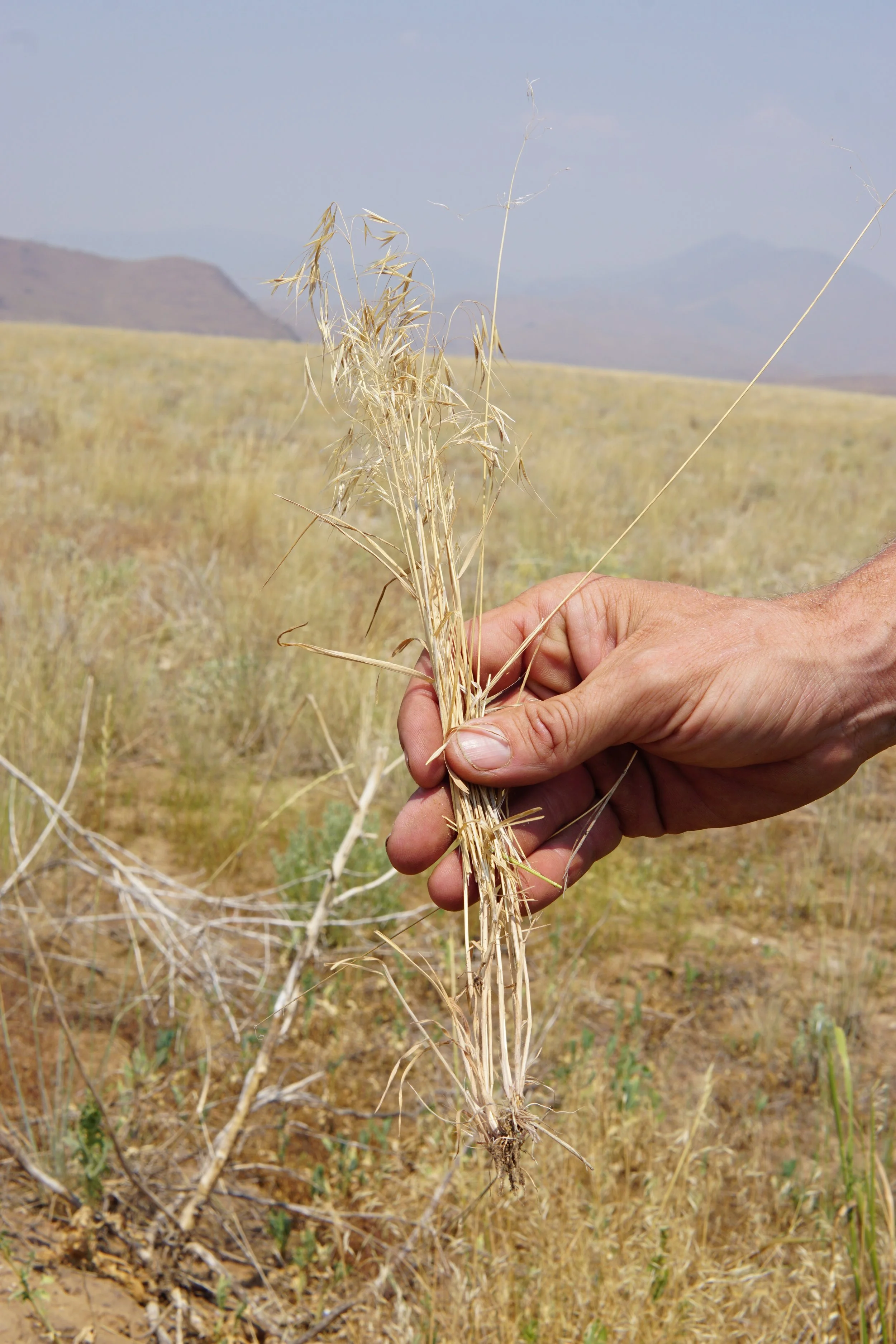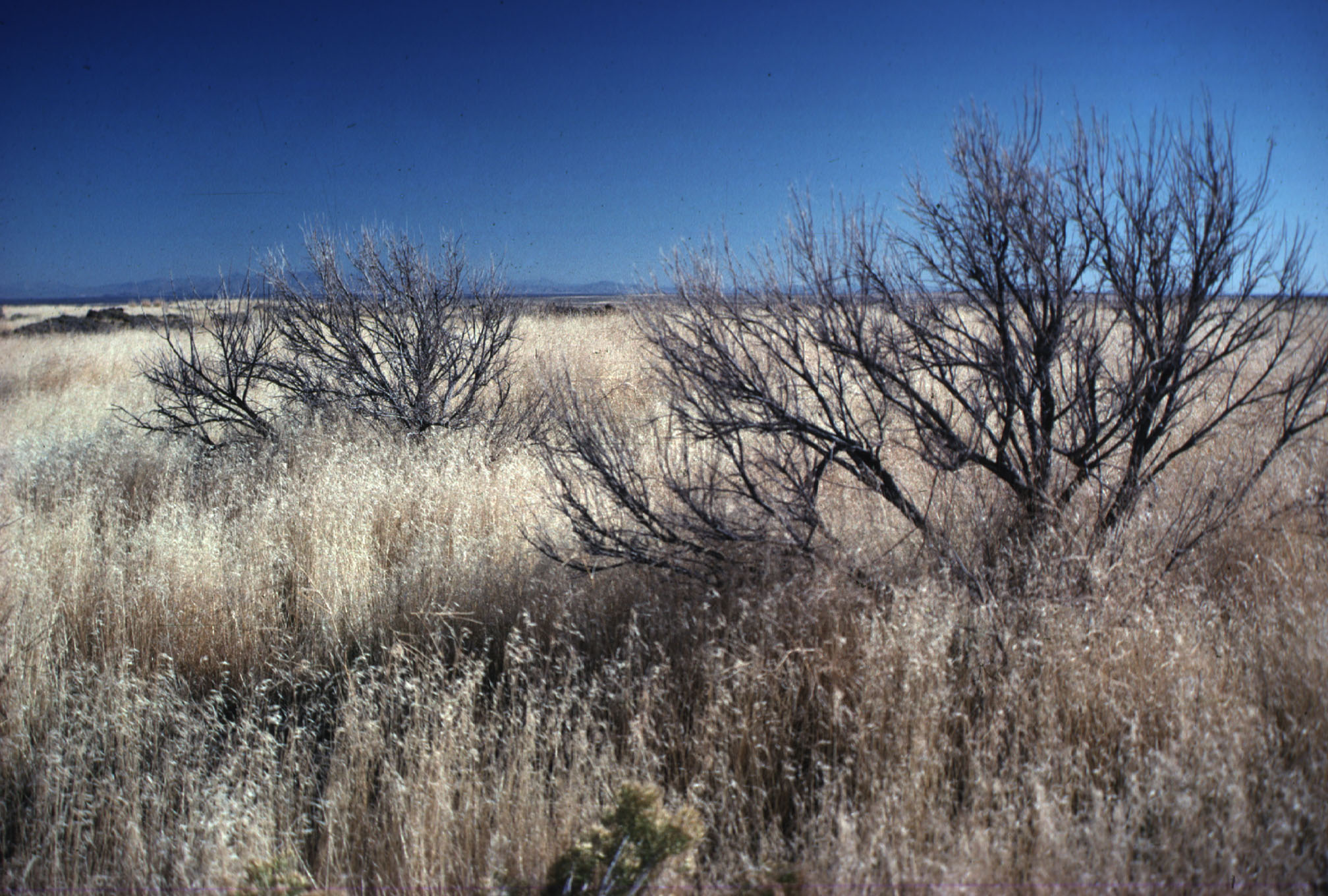Defending Habitat From Fire
Catastrophic wildfire is an increasing concern across the arid Intermountain West, including in the sagebrush and pinyon-juniper biomes. Although fire is a natural component of many ecosystems, the impacts of climate change, past management paradigms, accumulation of hazardous fuels, and increasing invasive annual grasses are increasing the frequency and often the severity of wildfires. Fire once meant opportunities for renewed growth of native species, but as systems change throughout the region, it can now be the harbinger of monocultures of invasive annual grasses.
Sagebrush once covered roughly 247 million acres in western North America. Today, this imperiled landscape is half its original size and rapidly shrinking, largely a result of invasive annual grasses and wildfire expanding their footprints.
Because of their extent, rapid spread, and negative ecological impacts (including degradation of native plant communities, loss of wildlife habitat and forage, and increased wildfire risk), invasive annual grasses are widely considered one of the primary threats to sagebrush ecosystems. These plants are readily spreading across the sagebrush biomes in places that have not experienced recent fire, despite the widespread belief that invasive annual grasses are mostly associated with wildfire.
Making matters worse, invasive annual grasses also end up increasing the risk of wildfire. Invasive annual grass-dominated systems are more susceptible to wildfire because short-statured annual grasses dry out quickly and create continuous fuel beds, increasing the risk that wildfire will spread and contributing to large, more contiguous, and more frequent rangeland fires. The build-up of hazardous fuels, including expanding conifers, may also change wildfire behavior.
To address these threats, the Intermountain West Joint Venture (IWJV) has signed a new Interagency Agreement with the Bureau of Land Management (BLM) to expand work on wildfire risk reduction and fuels management. This agreement will continue to support and grow the work the BLM and IWJV already implement throughout sagebrush and pinyon-juniper habitat for sage grouse and other wildlife while also addressing wildfire and invasive annual grass threats that are impacting many rural landscapes.
Putting Science Into Practice
-
Our work seeks strategic implementation of science-supported practices toward the National Cohesive Wildlife Fire Management Strategy goals. We’re working to:
• Reduce wildfire risk and promote landscape resilience to wildfires through proactive hazardous fuels reduction and post-fire rehabilitation treatments
• Promote fire-adapted communities when aligned with habitat conservation objectives
• Promote active vegetation management that supports safe and effective wildfire responseExamples of treatments in support of these goals, which focus specifically on wildlife habitat conservation objectives, may include:
• Strategic conifer removal
• Silvicultural treatments in pinyon-juniper woodlands aimed at increasing climate and wildfire resilience
• Invasive annual grass control via herbicide application and reseeding
• Targeted grazing
• Fuel breaks -
The Sage Capacity Team supports work to reduce hazardous fuels and address invasive annual grasses. Thanks to our recent Interagency Agreement with the BLM Fuels program, our team is growing. New Sage Capacity Team positions will directly support National Cohesive Wildlife Fire Management Strategy goals, focusing on wildfire resiliency, wildfire risk reduction, community assistance, and invasive annual grass expertise. This investment will grow human capacity to accelerate, coordinate, and streamline conservation treatments in priority areas for restoration and management. Reach out to Charlie Holz, our Sagebrush Field Delivery Capacity Specialist, to learn more.
-
Our Science to Implementation team works to enhance science delivery and technical transfer to better focus fuels management implementation, assess conservation outcomes of fuels management projects, and improve program delivery. Reach out to Andrew Olsen, our Science to Implementation Coordinator, to learn how we can support you.
-
The Invasive Annual Grass Technical Transfer Partnership, led by the Institute for Managing Annual Grasses Invading Natural Ecosystems (IMAGINE) at the University of Wyoming, aims to empower managers to defend and grow the sagebrush core. Centered around the proactive “Defend and Grow the Core” framework, a cooperative team from multiple universities, federal, state, and local agencies, non-profits, and the private sector will embark on a campaign to equip land managers with the knowledge, skills, and tools needed to implement effective invasive annual grass management. Experts will translate the latest science into highly usable technical materials, foster experiential learning through field workshops and online modules, and establish an innovative, multi-state demonstration and monitoring network that enables adaptive management and ongoing technical support.
Learn more about the Science and Practice of Fire, Fuels, and Invasive Annual Grass Management:
Looking for More Resources?
Check out the Resilient Landscapes Resource List. To assist partners with access to resources for project planning and assessment and to cut down on time spent searching for resources, we created a database of key resources related to fire and invasive annual grasses, wet meadow restoration, grazing, woodland expansion, game corridors, and more.
Resources that can be found here include science papers, frameworks and strategies, reports, data sources and tools, research syntheses and guides, webinars and workshops, factsheets, facilitation and collaboration resources, and communications resources.









































